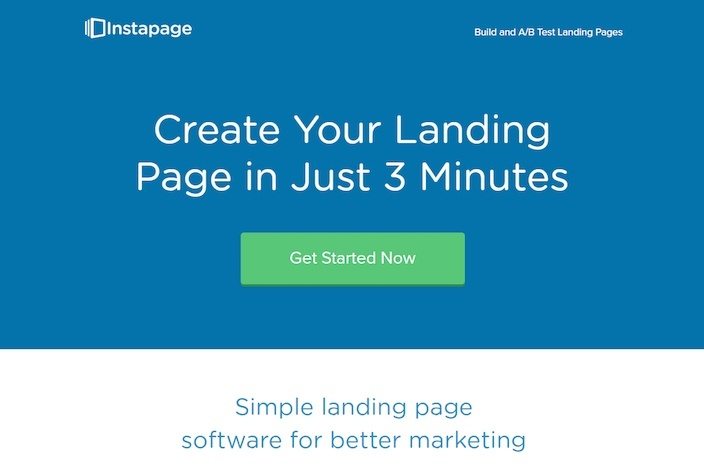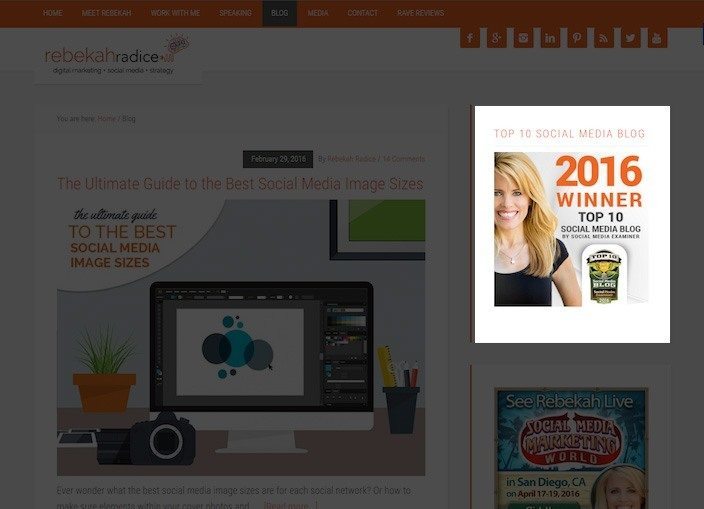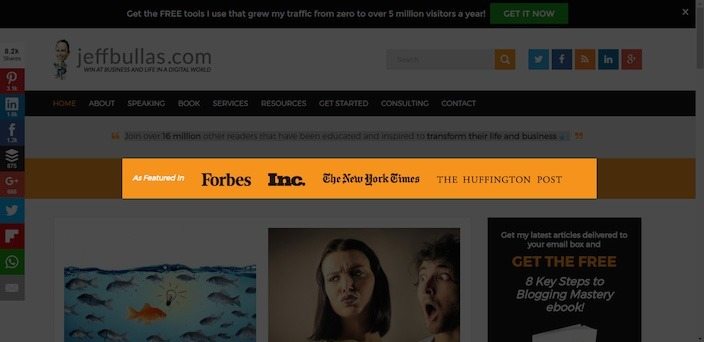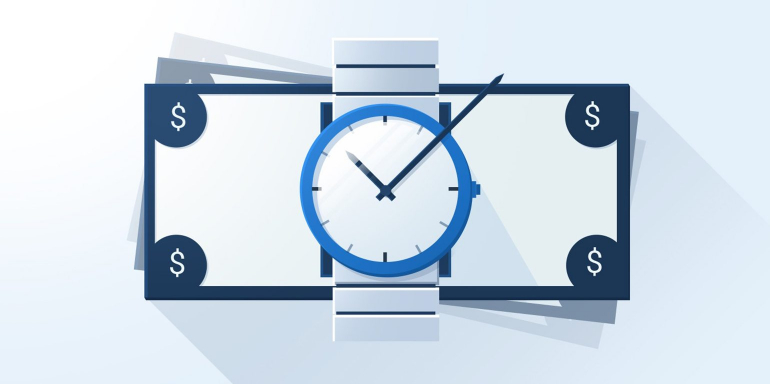You want more money. So do I, and so does everyone else. That’s where the problem for your marketing agency arises.
You want to boost your retainer fee, but you’re afraid you’re not going to be able to justify the high cost of your services.
Convincing clients to part with their money by promising you’ll generate more for them is no easy task. And that’s mostly because they don’t get an immediate, tangible benefit when they enter into a relationship with your agency.
Think of it like this: If I sell wrist watches, my customers get an immediate tangible benefit from purchasing them — the ability to tell time wherever they go.
If I sell clothing, my customers get the immediate benefit of looking good in a brand new outfit.
But with services-based businesses like digital marketing agencies, getting clients to commit to a higher retainer is based on selling promises:
“We can do x, y, and z better for your company.”
So when a prospect finally signs a contract, it’s often after carefully scrutinizing what you’ve accomplished, what you offer, and how much you’re selling it for.
That’s why we scoured the internet, from pricing blogs to psychology journals, to put together these 14 expert tips to help you better persuade clients, both current and future, to fork over their hard-earned money to your marketing agency.
14 Ways digital marketing agencies can grow their client retainers
1. Make your unique selling proposition stand out
No one gets into business without first having a unique selling proposition. So what’s yours? What differentiates you from the competition?
Are you consistently producing higher ROI than all the other agencies in your market?
Do you offer a faster turnaround than the majority of your competition?
Do you deliver a personal touch that no one else can?
Then say it! And do it boldly, do it often, and do it on all of your marketing collateral. The more you reinforce the value of doing business with your marketing agency, the more likely clients are to spend more in exchange for that value.
Take a look at this Instapage post-click landing page. Is there any question what the benefit of using our service is?

We offer a quick and easy solution for people who don’t have the technical chops to design and launch their own post-click landing pages — and we reinforce the value of that solution on all our marketing materials (faster, easier, more cost-effective).
2. Leverage the decoy effect on your pricing page
Let’s say you’re a content marketing agency that offers two different retainer options based on the services you perform.
The low-cost option is your “basic” retainer, for $1,000 a month. That partnership entitles clients to:
- 2 blog posts per week
- Facebook and Twitter management
- Google Ads management
- post-click landing page design
The higher-cost option, your premium partnership, is $2,500 a month, and it comes with much more:
- 7 blog posts a week
- Facebook, Twitter, Pinterest, Instagram management
- Google Ads management and optimization
- post-click landing page design
- Link-building and email outreach
- 4 eBooks per month
Now, obviously you’d prefer it if your prospects chose the premium partnership, however, it’s more than twice the cost. Even though it offers much more, most people will question whether they really need the additional services that come with the premium retainer.
This is where employing the use of a decoy effect can help you to sway clients toward the higher-cost option.
To do it right, you’ll need to create at least three retainer options. In this case, we’d make a third, “intermediate” retainer – and here’s where it gets tricky.
For this to work, your intermediate retainer has to have two things going for it:
- It needs to be slightly more affordable than your most expensive option, but still significantly more expensive than your basic plan. In this case, let’s say $2,000.
- It needs to offer similar services to the basic monthly partnership.
So let’s look at what happens when we introduce a third pricing option. The new intermediate plan is $2,000 a month and offers:
- 3 blog posts a week
- Facebook and Twitter management
- Google Ads management
- post-click landing page design
- 1 eBook per month
All of a sudden, the premium partnership starts to look a lot better.
For just $500/month more than the cost of the intermediate partnership, clients could get 4 more blog posts a week, link-building services, management for two more social networks, and 3 more eBooks written monthly.
This is exactly the strategy that Dan Ariely used to optimize pricing for The Economist magazine.
When offered two subscription options, $59.99 for yearly digital access, and $125 for yearly print and digital access, he found people most often chose the low-cost option.
However, when he introduced a third, intermediate, print-only subscription into the mix for $125, people started changing their minds. They thought to themselves, “The print subscription costs $125, and the print and digital subscription combined is the same price? Clearly this is the best bargain.”
From that point on, the print and digital combination were the most popular subscription option.
3. Collect as much data as you can
Your data is your proof, so highlight your results whenever you can.
Has your SEO agency boosted website traffic by at least 30% for every one of your customers?
Do your Google Ads campaigns convert three times higher than the industry standard because of sleek post-click landing page design?
You won’t know unless you track every last metric relevant to client success.
When trying to sell prospective businesses on your services, more data to show higher ROI will only help justify a higher cost. Other agencies may charge less, but can they prove that they can deliver the same results as yours?
4. Have in-depth knowledge of your industry
To know what to charge and what services to offer, it helps to know what your competitors are doing.
Maybe most agencies charge much more than you do, and as a result, can focus their efforts on just a few clients while you spread yourself thin serving several to make up for your lower retainer. If that’s the case, maybe your pricing needs some adjusting.
Or maybe other agencies are offering a service that you’re not — but could be. In that case, the answer to convincing your clients to invest in a higher retainer could be to add another useful service to your marketing arsenal.
So keep your friends close, and your competition closer. Learn what they do, how they do it, and incorporate it into your agency with your own spin.
5. If you want to get more, give more
Lots of times, agencies offer half-assed consultations that consist of a few emails, and maybe, if the client is lucky, even a formal report.
But how much value are you providing here? Remember: this is the first impression. It’s your chance to “woo” your client into paying top dollar for your services, so if you want more revenue
from them, you need to provide more value.
Perform an audit of their current strategies and see where you can help them improve, or give them a month of your services for free to prove what you’re capable of doing.
Don’t send them an eBook filled with case studies and statistics. Personalize your initial offer to provide real value.
6. Have an actual conversation
If you’re part of an agency, you know how difficult it can be to correspond with clients via email.
The exchange often looks like this:
- You get an email requesting help with a certain marketing task
- You respond with information about your agency and its solutions
- Next, your prospect emails back with specific information about her needs
- You quickly look over some of her marketing materials, then reach out to again with a few business-specific solutions
And then… crickets. Somewhere along the line the email chain dies.
Maybe you got caught up in other tasks, or maybe the client found a better agency to meet her needs. Either way, it could’ve been avoided by getting her on the phone or, even better, into your office for a meeting.
Before you enter into a relationship with a client, it’s important to talk to them on the phone, or in person. Don’t rely on contact forms and email chains to boost business.
The fact is, you’re busy, but so are your prospective clients. Why else would they be outsourcing their marketing?
It’s just as likely that your email gets lost in their inbox as it is their email gets lost in yours. Rise above the noise by getting more personal, and listen to the goals and needs of your prospects, then outline a plan for completing them.
You’d be surprised how big of a difference this can make.
7. Be yourself
There’s a reason many people vote for president based on who they could see themselves sharing a beer with.
Personality matters a lot to people – especially when they’re about to enter into a long-term transactional relationship with your agency. So don’t try to be someone you’re not.
If you’re a business that doesn’t shy away from using profanity, then show it. You’d probably be a great fit for bolder brands like “Sassy Bitch” or “FAT bastard.”
If you prefer to use your marketing powers strictly for social good, then make that evident, the way HelpGood does by specifically addressing nonprofits on their website.

Brands are more likely to pay highly for an agency they feel can accurately capture their brand voice, so give prospects a clear idea of what to expect from you. It’ll foster better communication and maybe even land your agency more money.
8. Add services
One of the easiest ways to justify a higher retainer is simply by adding a service. Start by breaking down all the services you currently offer clients into separate line items.
For example, if you’re a content marketing agency that offers “Website content” as one of your services, try to get more specific. Are you creating post-click landing pages? Blog content? Product pages? These are things you could potentially market separately.
Maybe instead of offering “Email marketing,” you provide a set amount of drip campaigns or e-newsletters you’ll send out to subscribers on a monthly basis.
Try to break down your services into as much detail as possible, then do your best to re-organize and improve them.
9. Get recognized for your work
Let’s say you’re an agency that specializes in social media marketing.
You consistently deliver high-quality work, and your clients love you for it. But how do you prove it?
Sure, you can quote your average ROI. You can promise better results than your competitors, and you can even tap current or former clients for great testimonials. But sometimes that still isn’t enough.
Now, what if you could showcase a big, shiny, virtual award from the world’s biggest social network?
The Facebook Awards give you the opportunity to do just that – allowing agencies and advertisers the chance to submit their best work for a chance to be recognized by their “Jury” and seen by industry peers.
As much as most advertisers and marketers value results over rewards, the same can’t always be said of clients. Sometimes adding “Award-winning” to the beginning of your agency’s name will convince them to spend a little more on you.
Search for industry award contests and enter as many as you can. Then, when you finally win it big, display your accolades proudly the way Rebekah Radice has done for her “Top 10 Social Blog” award from Social Media Examiner:

10. Position yourself as an authority
You can command a higher rate if you’re more knowledgeable and more well-known in your industry. When they want information and assistance, people turn to authorities, so position yourself as one by associating your agency with big names.
Do some sleuthing, then some networking, and woo established bloggers. Write for them, or ask for a contact that can help you get your articles featured in well-known publications.
Social media thought leader, Jeff Bullas, makes it very clear on his website where his work has been featured:

The more authority badges you can put on your website that humblebrag about things — like who your agency has worked with and where it’s been featured — the more likely clients are to pay more for your services.
11. Leverage loss aversion
Losses are two times more psychologically powerful than gains. This characterizes a theory known as “loss aversion,” first demonstrated by Amos Tversky and Daniel Kahneman.
In simpler terms, we’re much more affected by the fear of losing something than we are the benefit of gaining something.
You can use it to your advantage in a few ways.
1. On your pricing page
Let’s say you’ve broken down your prices by service. You offer organic search engine optimization, PPC management, and post-click landing page creation.
Currently, most clients retain you for organic search engine optimization and PPC management, but not many are willing to pay for post-click landing page creation.
Why, though? You boast conversion rates significantly higher than industry benchmarks, so it’s puzzling why so very few people take advantage of this service.
You boast conversion rates significantly higher than industry benchmarks, so it’s puzzling why so very few people take advantage of this service.
The problem could be in your phrasing.
Instead of focusing on how much business your clients could potentially gain by using your service, focus on explaining it regarding how much business they stand to lose.
For example, instead of:
“On average, clients who leverage our post-click landing page services gain 5% more customers per campaign.”
Try:
“Clients who don’t take advantage of our post-click landing page services lose out on an average of 5% more customers per campaign.”
Bonus: Tie that 5% loss to a monetary amount to reflect just how much it could affect your client’s bottom line.
2. In a trial of your services
If your post-click landing page service is as powerful as you say it is, provide it for free the first month. When it comes time for the client to decide whether or not to spend an extra $200 monthly, they’ll have a hard time saying “no” if you prove the value of your post-click landing pages.
The fear of losing out on 5% more business per campaign will set in, and they’ll have no choice but to say “yes” to your additional service.
12. Go after bigger fish
If you’ve been marketing to start-ups and small businesses, it might be time to go after bigger fish. Why?
Simply, they have more money.
In economics, this is referred to as the total expenditure effect. It states that the higher percentage a cost is in relation to total income, the harder it is to justify spending money on it.
Let’s look at it in a more basic way.
If I’m a small beverage start-up looking for marketing assistance, and I stumble across an agency that charges a $10,000 monthly retainer, there’s a good chance I’m going to shy away from it. That’s a lot of money for me because I’m not currently bringing in enough to justify spending ten thousand per month.
On the other hand, if I’m Coca-Cola, on the hunt for new representation, I’m going to have no problem spending that kind of money on monthly basis. It’s chump change to the soda giant.
If you want a fatter wallet, start targeting businesses with deeper pockets.
13. Be clear on what you can accomplish for a client
When we seek the solution to a problem, we often try to gauge how much we’re going to have to spend on that solution to reap its benefits, and how long it will take for those benefits to appear.
This is known as the “end benefit effect,” and it’s relevant to the way you market your agency to clients.
For example, let’s say a prospect is deciding between you and another agency. Your retainer is $2,500 monthly, and you’re looking for them to sign a 6-month contract.
On the other side, your competition’s retainer is only $1,000, and they’re pushing for a 6-month contract as well.
To the average business owner, the choice here is a no-brainer. You’re more than twice the cost of your competition.
However, let’s say you find out that client’s goal is to double website traffic.
Because you have a larger staff than your competition, and fewer, but bigger, clients, you can focus a lot of your efforts on this potential client’s needs. You explain to the to the prospect that you’re confident you can double their website traffic in just the six month contract period.
The client is happy with that, and goes back to the smaller, cheaper agency to ask the same question — and when he finds out the answer, he’s not happy.
An account manager at the agency explains that they don’t have the manpower to double website traffic in just six months, but they expect they could do it in eighteen.
Eighteen?!
All of a sudden, your agency is looking pretty appealing. Eighteen months at $1,000 a month is $18,000 – which is three thousand dollars more than what you charge for doing the job three times as fast.
By conveying to clients in great detail what you can do for them, how much it will cost, and how quickly you can do it, you can put yourself in a better position to justify a more costly retainer.
14. Market to people who really need your service
Viral publisher Buzzfeed gets a whopping 50% of its traffic from social media, and only .24% from display advertising.
So what does that tell us?
If Buzzfeed were to hire a marketing agency, they would look for one with strong social media skills, and not necessarily display advertising services.
So if your area of expertise is display advertising, then you’re probably not going to market to businesses like Buzzfeed.
If your agency’s expertise is Instagram, you’re going to want to sell to the fitness junkies and foodies who dominate the platform.
If what you know best is Twitter, marketing to the many writers that use the social network might be a better choice.
Knowing the kinds of businesses that need your services will help you figure out who can’t live without your agency. And the ones who can’t live without you, are willing to pay more for you.
Your turn
Turn ad clicks into conversions, create dedicated, fast-loading post-click pages for every offer. See how to provide all of your audiences with unique post-click landing pages by signing up for an Instapage Enterprise Demo today.

See the Instapage Enterprise Plan in Action.
Demo includes AdMap™, Personalization, AMP,
Global Blocks, heatmaps & more.
